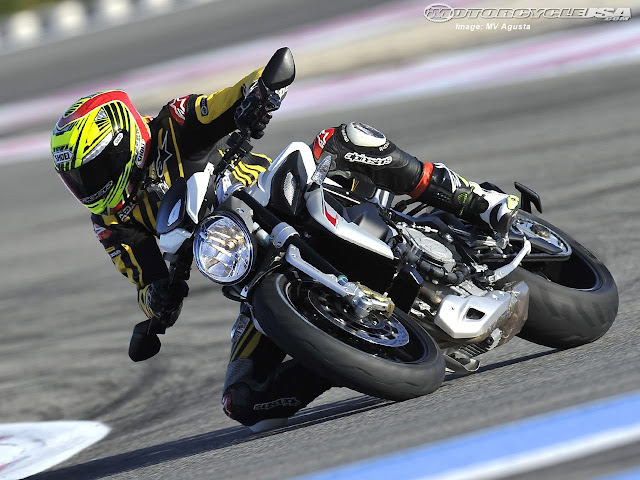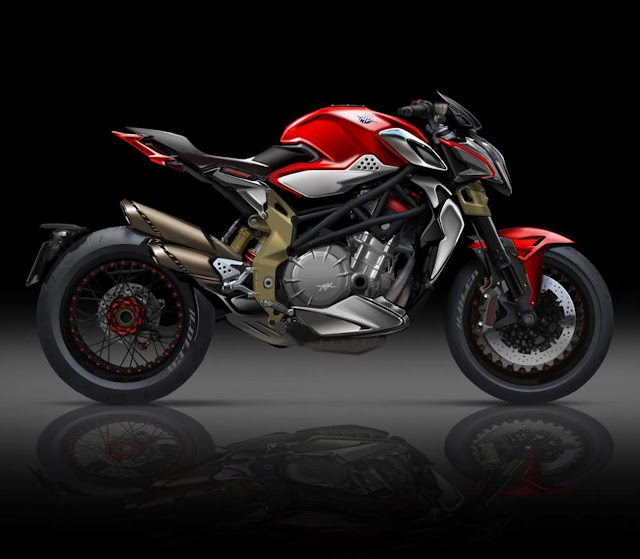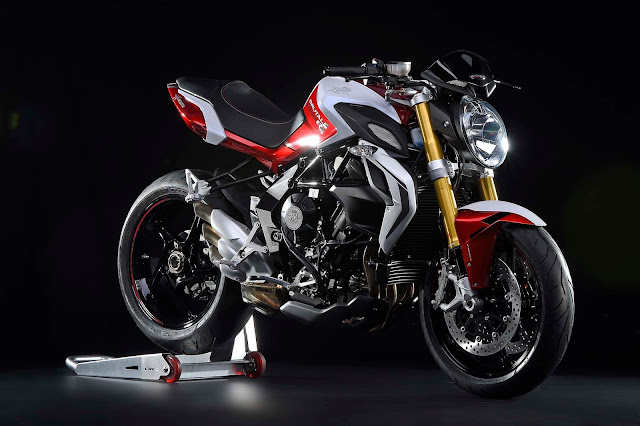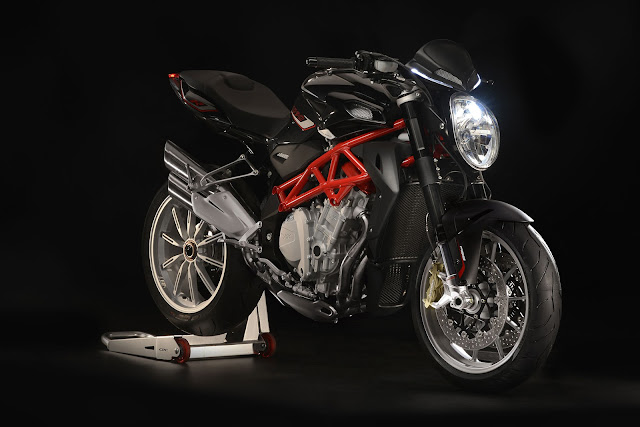MV Agusta Brutale
Compact, barrelchested, and eye-catching from its headlight to its tailpiece, the Brutale lived up to its name even at a standstill.
MV Agusta’s dramatic rebirth with the 750 F4 sportster had been one of the great motorcycling stories of the 1990s. But the firm’s boss Claudio Castiglioni knew that, to make revitalised MV successful, he needed to create a range of bikes that would exploit the F4’s technology and image to the full. Enter the next stage in MV’s revival: the Brutale.
The naked model shared the F4’s 749cc, liquid- cooled straight-four engine layout, with its radial four-valves-per-cylinder head design; and also the sports machine’s frame with its distinctive combination of cast sections and steel tubes. But one glance confirmed that there was a whole lot more to this bike than an F4 with its fairing removed.
Like the F4, the Brutale was created by Massimo Tamburini, the former Bimota co-founder, creator of the Ducati 916 and godfather of modern motorcycle design. Despite its commonplace unfaired, straight-four layout, the MV resembled nothing else on two wheels. It was unique from its drooping headlight to its pair of side-by-side silencers on the right.
In typical Tamburini fashion, the Brutale was dripping with neat touches, such as its carbon-fibre rimmed instrument console, adjustable footrests and intricate single-sided swingarm. The view from the low rider’s seat was dominated by the tapered, slightly raised one-piece handlebar. The upright riding position gave the Brutale some of the aggressive feel of an old-style superbike racer. That feeling was reinforced by the bike’s spine-tingling sound: a mix of intake gulping, through vents in the front of the fuel tank, and burble from the shotgun silencers.
Detuned but still rewy Although the Brutale engine was mechanically very similar to that of the F4, it was detuned by those new intake and exhaust systems. The result was a slightly reduced maximum of 127bhp at 12.50()rpm. and a boost in low-rev performance. Even so, to unleash the Brutale's full performance its rider had to keep the revs above the 9000rpm mark at which the motor breathed deeper and howled louder as it headed for the 13,000rpm rev- limiter and a top speed of 155mph (249km/h).
That power delivery made the MV hugely entertaining to ride although, with such an exposed riding position, fast cruising quickly became tiring.
Handling was excellent, as was to be expected of a bike so closely related to the F4. The Brutale was light, and could be flicked about easily with its broad handlebars, yet was stable at speed. The F4- style six-piston Nissin front brake calipers gave powerful stopping, too. And at slower speeds in town, the bike’s riding position made it reasonably comfortable.
MV originally announced that the first 300 units of the Brutale would come in Serie Oro (Gold Series) specification, with magnesium frame castings, swingarm and wheels. But the MV Group’s financial problems delayed production of those hand-built bikes. Following the MV Agusta Group’s purchase by Malaysian car firm Proton in 2004, it was the cheaper standard model, with aluminium chassis castings, on which production efforts were concentrated. Either way, the owners of an MV Agusta Brutale enjoyed plenty of raw performance and naked Italian style.
Refined Ride: the Brutale 1090RR
Such was the Brutale's impact that several of its styling features were copied by other manufacturers. MV followed the original model with the Brutale 910, then the even more powerful 1078RR, which produced 154bhp. In 2010, MV's parent company Harley-Davidson, which had bought the Italian marque two years earlier, changed direction with a pair of revamped Brutales, the 990R and 1090RR, which were designed to be more rider-friendly. The higher specification Brutale 1090RR, in particular, combined thrilling performance with impressive refinement. Despite their success, in August 2010 recession-hit Harley sold MV Agusta to a company led by long-time figurehead Claudio Castiglioni.
This Brutale’s gold frame casting, wheels and swingarm signified that it was a Serie Oro bike that used magnesium instead of aluminium for those parts. This saved a little weight and added considerably to the price. The two Brutale models ’ engines and other parts were
MV detuned the 749cc four-cylinder motor slightly from its F4 specification, which combined with the crisp fuel-injection system to give very lively throttle response. The Brutale’s short wheelbase and light weight also contributed to its suitability for wheelies.
Specification MV Agusta Brutale Serie Oro (2001)
- Engine Liquid-cooled dohc 16-valve four
- Capacity 749cc (73.8 x 43.8mm)
- Maximum power 127bhp @ 12,500rpm
- Transmission Six-speed, chain final drive
- Frame Tubular steel and cast magnesium
- Suspension Telescopic front; single shock rear
- Brakes Twin discs front; disc rear
- Weight 395lb (179kg)
- Top speed 155mph (249km/h)























0 comments: